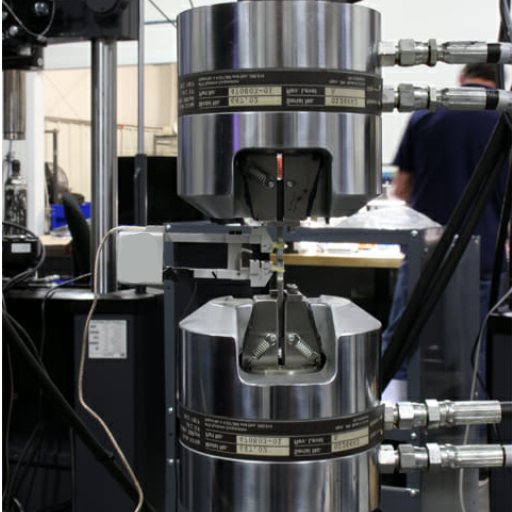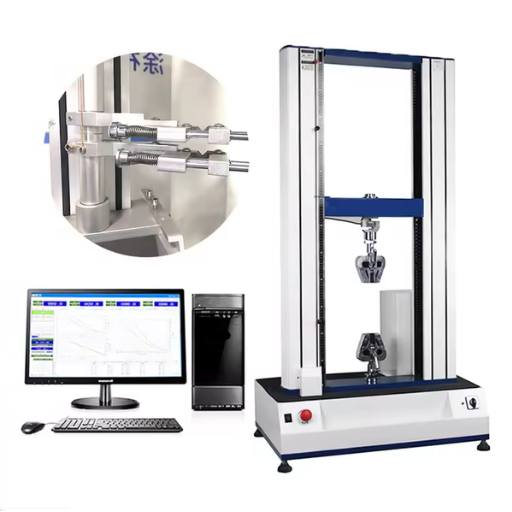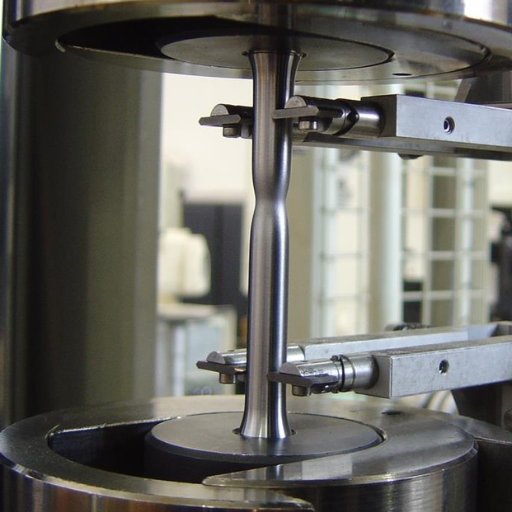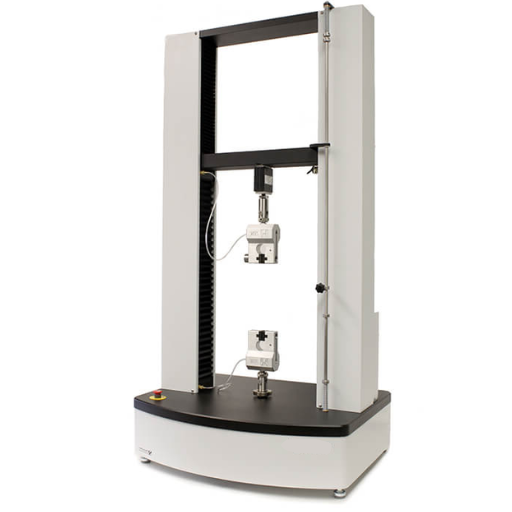Understanding the mechanical properties of materials is fundamental to innovation across industries, from aerospace engineering to biomedical design. Among the various methods used to evaluate material performance, the tensile test stands as a gold standard, providing critical insights into strength, ductility, and elasticity. This blog post dives deep into the science and significance of tensile testing, exploring how it uncovers the limits of materials under stress and informs decisions in material selection, product design, and quality assurance. By the end of this article, you will gain a deeper appreciation of how tensile testing plays a pivotal role in driving advancements in technology and engineering, ensuring safety, durability, and efficiency.
What Is a Tensile Test and How Is It Conducted?

A tensile test is a fundamental material testing method used to measure how a material responds to applied tensile (stretching) force. It evaluates critical properties such as tensile strength, elongation, and Young’s modulus, which provide insight into the material’s performance under stress.
The test is conducted by securing a specimen of the material between two grips in a tensile testing machine. The machine applies a controlled pulling force to the material, increasing the load gradually until the specimen deforms or breaks. During the process, key data points, such as the force applied and the resulting elongation, are recorded to create a stress-strain curve. This curve is used to determine the material’s mechanical properties and its suitability for specific applications.
Understanding the Tensile Test Process
Key Stages of the Tensile Test Process
The tensile test follows a series of structured steps to evaluate a material’s mechanical properties. Initially, a standardized specimen is prepared with predetermined dimensions to ensure uniformity and repeatability. The material is mounted securely between the grips of the tensile testing machine, ensuring proper alignment to prevent uneven stress distribution. The machine then applies a uniaxial tensile force, which increases incrementally while precise measurements of load and deformation are recorded.
Throughout the test, several critical points are captured, including the yield strength (the stress at which the material begins to plastically deform), ultimate tensile strength (the maximum stress the material can withstand), and elongation at break, which indicates ductility. The resulting stress-strain curve provides a comprehensive understanding of material performance under tensile loads, aiding in quality control, design validation, and material selection in engineering applications.
How Tensile Strength Is Measured
Tensile strength is measured using a tensile test, which is typically performed on a universal testing machine (UTM). The process involves clamping a sample of the material between two grips and applying a uniaxial tensile force until the material fails. Key parameters recorded during the test include:
- Gauge Length: The initial length of the test specimen, critical for calculating elongation.
- Cross-Sectional Area: The original area of the specimen’s cross-section, used to determine stress.
- Force Applied (F): Measured by the load cell in the UTM.
- Stress (σ): Calculated as σ = F / A, where A is the cross-sectional area.
- Strain (ε): Determined by the change in length divided by the original gauge length (ε = ΔL / L₀).
- Yield Strength: The stress at which the material begins to plastically deform.
- Ultimate Tensile Strength (UTS): The maximum stress the material can sustain before failure.
Throughout the test, a stress-strain curve is generated, capturing the material’s mechanical behavior. The test is performed under controlled conditions, including consistent loading rates and ambient temperature, to ensure accurate and repeatable results.
The Role of a Test Machine in Tensile Testing
The test machine plays a critical role in tensile testing by ensuring the precision and reliability of the process. Key roles of the test machine include:
- Accurate Force Application: The machine applies a uniaxial force to the specimen at a controlled rate, ensuring consistent and measurable loading conditions.
- Measurement of Extension: It precisely measures the elongation of the specimen during the test, which is fundamental for determining strain.
- Data Recording and Analysis: The machine is equipped with sensors and software to capture real-time data, such as load and displacement, which are used to generate the stress-strain curve.
- Controlled Test Environment: Advanced machines can maintain specific temperature and humidity conditions, ensuring tests adhere to standard environmental requirements.
- Versatility for Specimen Types: Modern test machines accommodate various specimen geometries and materials, enabling tests across metals, polymers, and composites with interchangeable grips and fixtures.
What Are the Benefits of Tensile Testing for Industries?

Tensile testing provides industries with critical insights into material performance, ensuring reliability and safety in application. It allows for the identification of key mechanical properties such as tensile strength, elasticity, and elongation, which are essential for material selection and design optimization. By verifying compliance with industry standards, it enhances quality control processes and minimizes the risk of material failure. Furthermore, tensile testing supports innovation by enabling the development of new materials with tailored properties to meet specific application requirements. This ensures operational efficiency and boosts consumer confidence in the final products.
How Tensile Testing Helps in Material Selection
Tensile testing plays a crucial role in material selection by providing precise data regarding a material’s mechanical properties, such as tensile strength, yield strength, elongation, and modulus of elasticity. These parameters are essential for determining whether a material can withstand operational stresses and meet the requirements of its intended application. The test helps engineers and manufacturers compare different materials systematically, ensuring the chosen material offers optimal performance under given conditions, such as load-bearing capacity or resistance to deformation. Additionally, tensile testing validates the consistency of material quality across batches, which is vital for ensuring reliability and compliance with rigorous industry standards.
Quality Assurance Through Tensile Testing
Practical Applications of Tensile Testing for Quality Assurance
By conducting tensile testing, I ensure that the materials I work with meet the necessary mechanical strength and durability standards for their intended use. This process allows me to objectively assess properties such as tensile strength, elongation, and modulus of elasticity, ensuring the material is suitable and safe under operational stresses. Additionally, I rely on tensile testing to validate batch consistency, which is critical in maintaining product reliability and compliance with stringent industry grading systems. Leveraging this method, I confidently select materials and verify their performance to support the demands of engineering applications while adhering to established quality benchmarks.
The Impact on Quality Control and Quality Assurance
The integration of tensile testing into quality control and quality assurance processes ensures that all materials meet predefined mechanical performance criteria. This method allows for the evaluation of key parameters such as tensile strength, yield strength, elongation, and modulus of elasticity. For example, tensile strength values are verified to ensure materials can endure specified loads without failure, while yield strength confirms the stress point at which permanent deformation occurs. Elongation measurements, expressed as a percentage, gauge ductility, and the modulus of elasticity ensures structural rigidity under operational conditions. Incorporating these parameters provides a systematic approach to maintaining consistency across production batches, detecting material anomalies, and ensuring compliance with applicable industry standards such as ASTM and ISO guidelines. This robust framework minimizes the risks of product failures and enhances the reliability of engineering components.
How Is a Tensile Specimen Prepared?

Tensile specimen preparation follows a precise procedure to ensure accurate and reproducible test results. The material is typically machined into a standardized shape, such as a flat or round specimen, according to applicable standards like ASTM E8/E8M or ISO 6892. Dimensions, including gauge length, width, and thickness, are carefully controlled to meet these specifications. The surface must be free of imperfections and contaminants that could influence the results, so fine machining or polishing is often performed. Proper alignment during machining and testing ensures uniform stress distribution throughout the specimen, reducing the likelihood of skewed data.
Steps in Tensile Specimen Preparation
- Material Selection
Choose the appropriate material for the specimen, ensuring it meets the required specifications for the intended test.
- Specimen Design
Determine the geometry of the specimen based on the testing standards (e.g., ASTM E8/E8M or ISO 6892). This typically includes the gauge length, width, thickness, and overall shape.
- Cutting or Machining
Cut the specimen from the raw material using precise machining techniques such as laser cutting, CNC machining, or traditional milling to achieve consistent dimensions.
- Surface Preparation
Ensure the specimen’s surface is free from scratches, burrs, or contaminants that may affect test results. This may involve grinding or polishing the surface to an appropriate finish.
- Dimensional Verification
Measure critical dimensions of the specimen (e.g., gauge length, width, thickness, radius of fillets) using calibrated tools like micrometers or calipers to verify compliance with the standard specifications.
- Edge Finishing
Smooth the edges and transitions, especially around fillets, to reduce stress concentrations and ensure uniform stress distribution during the test.
- Alignment Inspection
Check for proper alignment of all surfaces and ensure the specimen is symmetrical, minimizing the possibility of bending stresses during the test.
- Marking Gauge Length
Mark the gauge length region on the specimen using a non-intrusive method to enable accurate strain measurement during testing.
- Cleaning
Remove all residual oils, dirt, or other contaminants using appropriate cleaning solutions that will not affect the material properties.
- Storage
Once prepared, store the specimen in a controlled environment to prevent oxidation, corrosion, or physical damage before testing.
Importance of Specimen Dimensions and Geometry
Specimen dimensions and geometry play a critical role in ensuring the accuracy and reliability of mechanical testing. Uniform and precise dimensions prevent stress concentrations that could result in premature failure or erroneous data. For tensile testing, standard parameters such as gauge length, width, and thickness should conform to relevant standards (e.g., ASTM E8/E8M or ISO 6892) to ensure comparability. Commonly recommended dimensions include a gauge length of 50 mm for metallic specimens and a width-to-thickness ratio of at least 8 to minimize edge effects. Additionally, maintaining proper geometric symmetry ensures even stress distribution across the test specimen, thereby enabling consistent and repeatable results.
What Are the Key Testing Standards in Tensile Testing?

Several key standards govern tensile testing to ensure uniformity, reliability, and comparability of results. Notable among these are:
- ASTM E8/E8M: This standard specifies testing methods for metallic materials, providing guidelines for specimen preparation, test execution, and data interpretation.
- ISO 6892: Internationally recognized, this standard details procedures for tensile testing of metallic materials, emphasizing parameters like strain rate control and temperature effects.
- ASTM D638: Widely used for testing polymer materials, this standard outlines specimen geometries and conditions for accurate tensile property evaluation.
- ISO 527: A global standard specific to plastics, addressing tensile testing methodology, test speeds, and environmental considerations.
Adhering to these standards ensures testing consistency and facilitates meaningful comparisons across different laboratories and materials.
Overview of ASTM and ISO standards
ASTM and ISO standards provide a reliable framework for material testing, ensuring consistent methodologies and reproducible results. ASTM D638 and ISO 527 are particularly instrumental in evaluating the tensile properties of polymers. By aligning these specific standards with the latest data regarding material performance trends from resources like Google’s search engine, it becomes evident that these protocols remain critical in meeting industrial requirements for precision and repeatability. For example, the increased development of high-performance polymers for advanced manufacturing sectors emphasizes the need for robust standardization in mechanical testing.
Recent data suggest a growing demand for bioplastics and composites within industries such as automotive and healthcare, where material standards like ASTM D638 and ISO 527 are essential for certifying product suitability. Integrating these standards allows for a global consistency that supports innovation while maintaining stringent quality control, bridging the gap between emerging technologies and regulatory compliance.
Compliance with International Testing Standards
Compliance with international testing standards is essential to ensure product reliability, safety, and market acceptance. By aligning with established frameworks like ASTM and ISO, we demonstrate commitment to quality and precision, meeting the rigorous demands of industries globally. These standards not only enable compatibility across international markets but also facilitate innovation by providing structured guidelines for material performance evaluation.
How Do Tensile Testing Services Enhance Research and Development?

Tensile testing services enhance research and development by providing precise data on material strength, elasticity, and deformation under stress. This information is critical for evaluating material performance, selecting suitable materials for specific applications, and optimizing designs for durability and efficiency. By identifying potential weaknesses and failure points, tensile testing enables researchers and engineers to innovate with confidence, ensuring that new materials and products meet stringent performance and safety standards.
Role of Tensile Testing Services in Innovation
Tensile testing services are integral to driving innovation by providing accurate data on material properties, such as ultimate tensile strength (UTS), yield strength, elongation, and Young’s modulus. These parameters help us evaluate how materials will perform under specific loads, ensuring they meet both structural and safety requirements. By partnering with tensile testing experts, we can iterate and optimize designs more rapidly, mitigate potential failure risks, and confidently adopt cutting-edge materials in advanced applications. This process empowers us to meet modern engineering challenges, stay competitive, and uphold the highest standards of quality and reliability.
Advancements in Tensile Testing Technology
- Automated Testing Systems: Modern tensile testing machines integrate advanced automation, enabling consistent, repeatable tests with minimal manual intervention. Automation reduces human error and increases testing efficiency across high production volumes.
- High-Precision Sensors: Advances in sensor technology have significantly improved the accuracy of load and elongation measurements, allowing engineers to capture even the smallest material deformations with high reliability.
- Real-Time Data Analysis: State-of-the-art tensile testers now feature real-time data acquisition and processing capabilities, providing immediate insights into material behavior and facilitating more informed decision-making during the engineering design process.
- Enhanced Environmental Chambers: Modern systems can simulate extreme environmental conditions, including controlled temperature, humidity, and pressure, to evaluate material performance under diverse operational scenarios.
- Digital Integration and AI: With the incorporation of machine learning and AI-driven analytics, tensile testing devices can now predict material performance trends, optimize testing parameters, and offer predictive maintenance, ensuring increased longevity and reduced downtime of testing equipment.
Reference Sources
- Tensile Test Experiment – Michigan Technological University
- Tensile Testing – An Overview on ScienceDirect
- Tensile Testing Techniques – EAG Laboratories
- What is Tensile Testing? – TWI Global
- Top Tensile Testing Machine in China
Frequently Asked Questions (FAQs)
Q: What is tensile testing and why is it important?
A: Tensile testing, also known as tension testing, is a fundamental materials science and engineering test where a test sample is subjected to a controlled tension until failure. It is important because it helps determine key properties such as tensile strength, elasticity, and ductility of materials.
Q: What are the advantages of tensile testing?
A: The advantages of tensile testing include the ability to determine the tensile stress, strength, and deformation characteristics of a material. It provides reliable tensile test data that is crucial for understanding how materials will behave under various forces, which is essential in designing safe and effective products.
Q: How does tensile testing equipment work?
A: Tensile testing equipment works by securing a test sample in grips and applying a tensile force until the material is pulled apart. The testing systems measure the force applied and the corresponding elongation of the material, providing a tensile profile of the test.
Q: What types of materials can be tested for tensile strength?
A: A wide range of materials, including metals, plastics, and composite materials, can be tested for tensile strength. Tensile testing is used to evaluate the mechanical properties and performance of these materials under stress.
Q: What information can be obtained from the results of a tensile test?
A: The results of a tensile test provide valuable information about a material’s tensile strength, yield strength, elongation, and reduction in area. This data helps in assessing the material’s suitability for specific applications and predicting its behavior under different conditions.
Q: Why is uniaxial tensile testing commonly used?
A: Uniaxial tensile testing is commonly used because it provides a simple and direct method to obtain tensile properties by applying force in one direction. It simulates real-world conditions where materials often experience uniaxial stresses, making the results highly applicable.
Q: Can tensile testing be performed at different speeds?
A: Yes, tensile testing can be performed at a range of test speeds to simulate various conditions and understand the material’s response to different rates of loading. This helps in determining the material’s behavior under both slow and rapid force applications.
Q: How does tensile testing contribute to materials science?
A: Tensile testing contributes significantly to materials science by providing insights into the mechanical properties of materials. It aids in the development and improvement of materials, ensuring that they meet the necessary performance and safety standards.
Q: What is the significance of plastic deformation in tensile testing?
A: Plastic deformation is significant in tensile testing as it indicates the point where a material undergoes permanent change in shape. Understanding plastic deformation helps in evaluating a material’s ductility and toughness, which are critical for applications requiring high durability.
Q: In what industries is tensile testing particularly beneficial?
A: Tensile testing is particularly beneficial in industries such as aerospace, automotive, construction, and consumer electronics, where materials must meet stringent performance criteria. It ensures that materials can withstand the stresses encountered in their specific applications.






